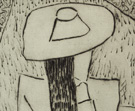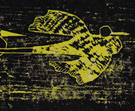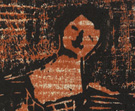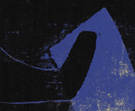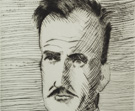|
Humanities and Social Sciences Library > Collections & Reading Rooms > Print Collection > Milton Avery PrintsAlthough devoted primarily to painting, Milton Avery also produced nearly sixty drypoints, woodcuts, and lithographs in concentrated periods of activity from 1933 to 1963. His approach to printmaking was hands-on and direct, showing no concern for the complicated techniques that would have required extensive collaboration with master printers. Avery used discarded commercial printing plates for making his first drypoints, which simply required him to scratch the spare lines of his compositions into the metal with a sharp tool but without the aid of acid. He had little interest in printing an edition of identical impressions and generally set his plates aside after pulling a few proofs for himself. It was only in later years that most of his drypoints were printed in editions by professional printers, such as most of those shown here, which were issued in 1947 and 1948 in portfolios published by the Laurel Gallery in New York. Avery made all of his woodcuts, displaying the same beguiling freshness as his earlier drypoints, from 1952 to 1955. He enthusiastically engaged himself in the process of carving his designs on ordinary pine planks with knives and gouges. He was equally intrigued by the process of hand-printing his woodcuts with the back of a spoon, and in the varying effects among impressions that he could achieve by altering the inking, the registration of the blocks, and the hand-applied pressure while printing. Emphasizing pared-down shapes in his woodcuts and formal equilibrium by means of a few lines in his drypoints, Avery’s prints are never completely abstract. The personal and everyday subjects of his prints, similar to those of many of his paintings, included his wife Sally, his daughter March, himself, family friends, nudes, birds, and animals. Although Avery was known as a great colorist in his paintings and watercolors, the palette in his prints was largely limited to black and white, with the frequent addition of a single primary color in the woodcuts. In 1949 he learned the process of making monotypes, which show a greater range of color, and over the following two years created over two hundred works in the medium. Milton Avery’s woodcuts occupy a primary place in the revival of the medium by American artists in the 1950s. This revival will be a focus of the forthcoming exhibition Prints with/out Pressure: American Relief Prints from the 1940s through the 1960s, drawn from the holdings of the Library’s Print Collection. My Wife Sally. 1947. Drypoint Riders in the Park. 1934. Drypoint Head of a Man [Louis Wiesenberg]. 1935. Drypoint Reclining Nude. 1948. Drypoint
By the Sea. 1948. Drypoint Three Birds. 1952. Woodcut printed in blue and black on japan paper
Pilot Fish. 1952. Woodcut printed in blue and black on japan paper |


